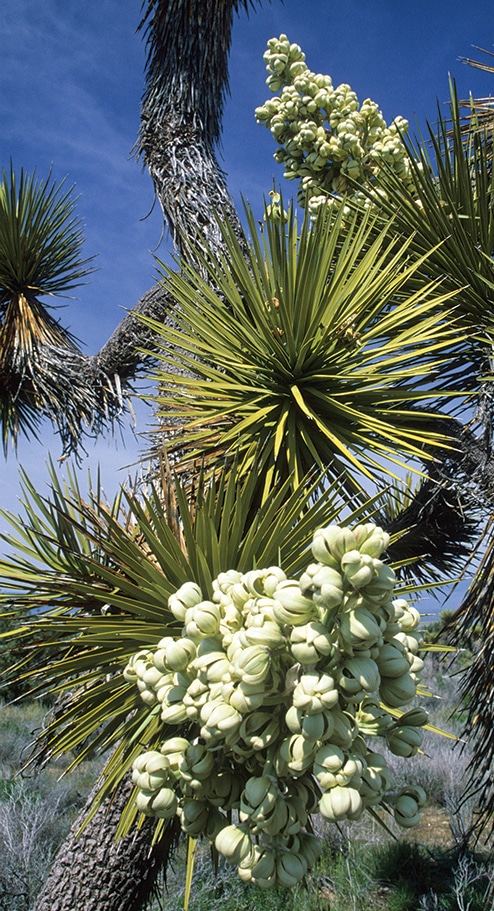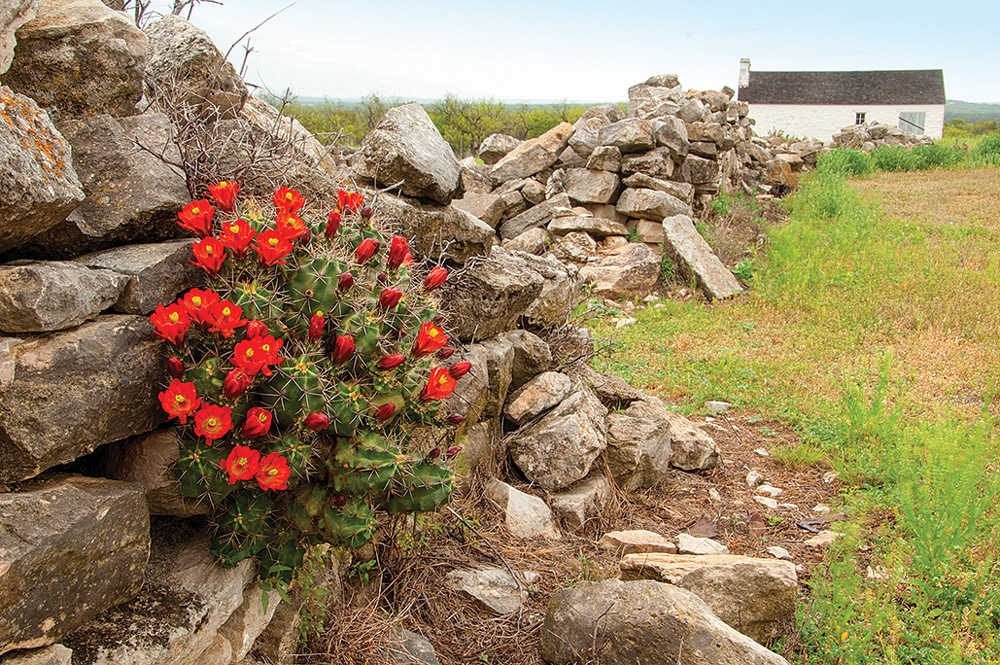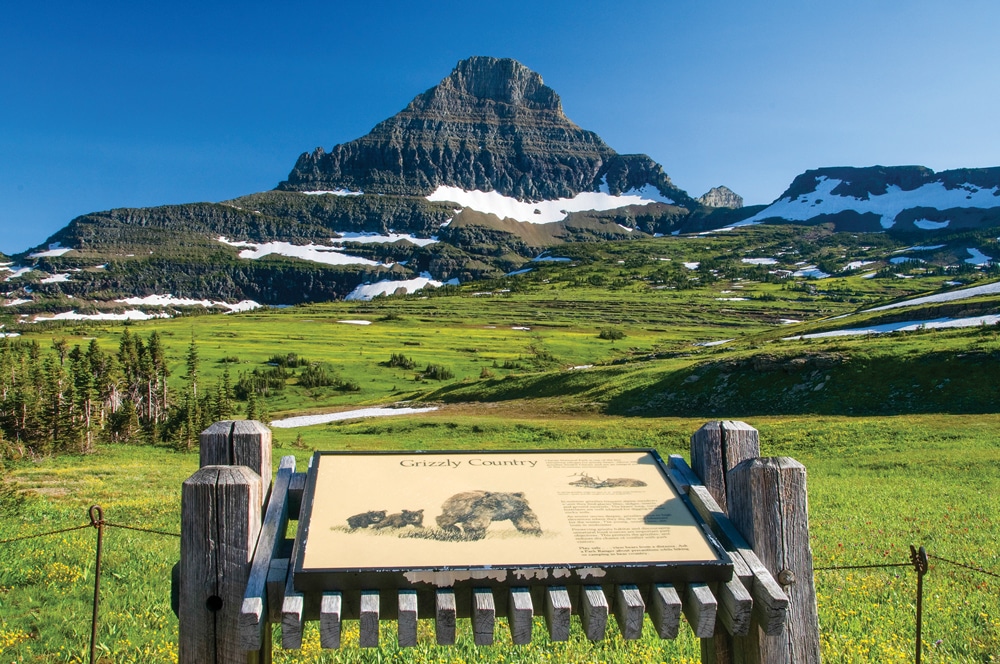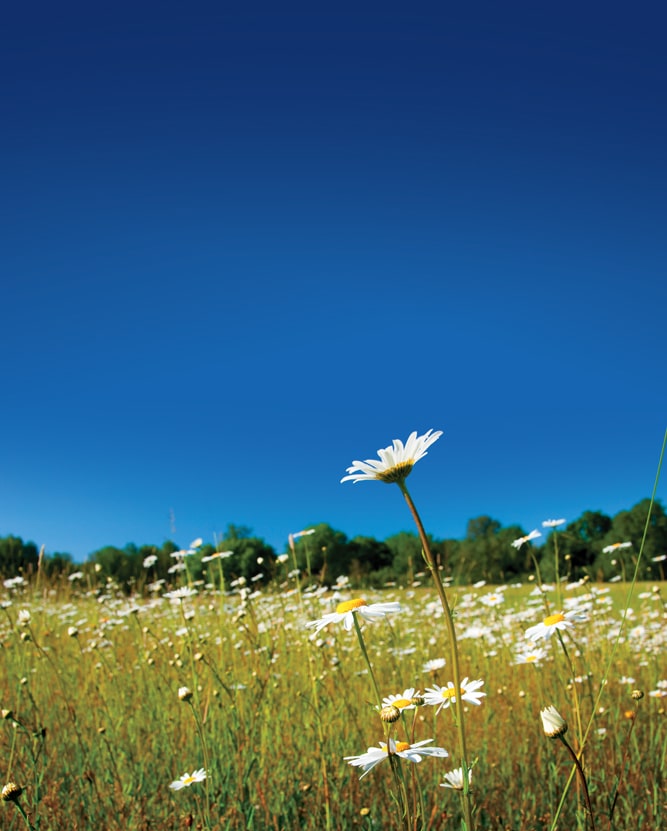A Tour of Wildflower Hot Spots Across the Country
When nature’s wand sweeps over the barren-sleep of winter, the transformation is celebratory and a signal to travel. Given the diversity of this great land, the wildflower theater is varied and the timing accommodating – even for procrastinators. Blooms burst forth February through September.
The South conjures fragrant-sweet memories and charm with blossoms of honeysuckle, dogwood and magnolia. Rhododendron and mountain laurel reign as you migrate north through the Blue Ridge and Smoky mountains and continue north through the mid-Atlantic and New England states. The Great Smoky Mountains arguably contain the greatest botanical diversity in the nation.
Black-eyed Susan, prairie aster, blazing star and butterfly-weed strut color across the Midwest prairies, while Texas two-steps in with its signature bluebonnet. Look for showers of rhododendron and azalea to again take hold under the towering California redwoods.
A pointed array of cacti, agave and yucca join a rainbow of annuals adorning the desert southwest, and the high country Sierra, Cascade and Rocky mountains roll out carpets of alpine flora in the few choice weeks between snowmelt and first frost (or snowfall). Swamps, forests, chaparral, dunes and coastal shores, all have their decoration.
Strolling in fields of color, photographing or capturing the fleeting moment on canvas recommend wildflower travel. But, a floral backdrop enhances most recreational endeavors.

Blooming Joshua trees are a common sight in Arthur B. Ripley Desert Woodland State Park, 7 miles west of the Antelope Valley California Poppy Reserve.
Blooms also attract birds, bees, butterflies and wildlife. One afternoon in Alberta, Canada, from the safe embrace of our vehicle, we watched a sunning radio-tagged grizzly top dandelions one by one. The color vanished but the memory stayed.
A flip through most any calendar yields travel possibilities. Native plant societies can offer suggestions. Naturalist-led walks can acquaint you with local species. A good wildflower field guidebook adds to appreciation. Popular areas may have wildflower hotlines or tracking reports.
Winter rains followed by warm sunny days can herald a floral bonanza. Too much or no rain, sparse displays. It’s a delightful crapshoot.
Because many displays occur in our state and national parks, motorhome travelers will find convenient access and overnight accommodation on the spot. Private facilities fill in with added comforts, services and often better size accommodation.
The only rule for wildflowers: Don’t pick. It’s a good one, ensuring even better shows in future years. Only a hayfever sufferer could find fault – fortunately for me, there’s medicine.
Desert Bloom, California Mojave
Desert reaches, whether Mojave, Sonoran, Chihuahuan or Great Basin, are vast, harsh and complicated, as well as delicate and beautiful when the elements collide in a perfect spring.
In the California Mojave, Mother Nature ties on her many-colored hostess apron late February through May, serving up purple mat, sand verbena, lily, primrose, lupine and desert dandelion. The red and yellow blossoms of barrel, beavertail, prickly pear and hedgehog cacti arrive March to June.

At Desert Tortoise Natural Area, in California’s eastern Kern County, desert candle is one of more than 160 different plants.
Joshua Tree National Park (cupped by Interstate 10 south of Twentynine Palms) combines the best of the Mojave and Great Basin deserts. Its namesake Dr. Seuss-esque tree is an irregular bloomer of the agave family, flowering February through April. Mojave National Preserve, stretched between interstates 15 and 40, salutes the core Mojave offering. Each place has trails, historical sites, rock climbing and plenty of flowering trees, shrubs, cacti and annuals.
State park and Bureau of Land Management (BLM) sites broaden viewing opportunities. Mid-March to June, at Desert Tortoise Natural Area (a BLM day-use area off dirt Randsburg-Mojave Road, 5 miles north of California City), tortoises feed on the desert annuals, storing up water and fat. Early risers may see the sensible, but threatened, cool-of-the-day feeders. Grant them space and heed rules to protect them.
Desert admiration requires attention to the spiny plant defenses, and travelers should carry water, wear hats and keep fuel tanks topped.
Mountain Laurel, Connecticut and Pennsylvania
Because the Mississippi River signals the end of the laurel’s westward march, this deprived Westerner must travel for its admiring.
Celebrating this shared state flower, Connecticut and Pennsylvania roll out quite a welcome. The evergreen shrub favors ridges and supports clusters of pink-and-white cupped stars in June.
In Connecticut, a passenger vehicle eases travel and parking. State parks offer trails and viewing: Sleeping Giant (Hamden), Bigelow Hollow (south of Massachusetts, east off Interstate 84), Burr Pond (Torrington), Chatfield Hollow (Killingworth) and Great Pond State Forest (west of Simsbury, passenger vehicle only) are good choices. Other destinations are Tarrywile Park and Mansion (Danbury) and the White Memorial Nature Center in Litchfield Hills.
But the laurel is prolific, seen most everywhere in the state. Mashamoquet Brook (near Abington), Kettletown (near Southbury, 28-foot maximum size) and Devil’s Hopyard (East Haddam) combine state park camping and laurel, with trails, overlooks and waters to explore.
Pennsylvania’s Laurel Highlands, in the southwest corner, offers another logical start. For area access and windshield viewing, PA 381 runs north-south between Ligonier and the National Road (U.S. 40) at Farmington, linking Fort Ligonier and Fort Necessity National Battlefield. Roadside parks and reserves allow floral stops. Heritage encounters may include General George Washington, Frank Lloyd Wright (Fallingwater), Andrew Carnegie and R.K. Mellon.
Ohiopyle and Laurel Hills state parks both have campgrounds and trails. Ohiopyle offers whitewater sport and rail-trail cycling along the Youghiogheny River. The Laurel Highlands Hiking Trail runs 70 miles through five highland counties – most trail samplings feature laurel.
Overlooks, byways and trails along Pennsylvania’s Allegheny Reservoir (at the New York border, near Warren) and in the surrounding Allegheny National Forest likewise have admirable mountain laurel showings.
Bluebonnets, Central Texas Hill Country
The home state of Lady Bird Johnson, responsible for the beautify America campaign, is a must on any wildflower list. The Hill Country blooms April through June.

Ruins of barracks with claret-cup cactus growing around the rocks at Fort McKavett State Historic Site, Texas.
Despite my imagined fields being bigger, brighter and far more accessible, the region welcomes with lovely drives. What it lacks are turnouts. Parks, wildlife areas (if you have access to a passenger vehicle) and other public sites meet that need.
Fields painted in lavender verbena complemented our travel from San Antonio into the Hill Country. We also glimpsed bluebonnets and Indian paintbrush seeded along the private ranch roads and property fronts. The best natural displays were at Kerr Wildlife Area and Inks Lake.
Fort McKavett State Historic Site paired white adobe and stone ruins from a Texas-Indian wars fort with a smattering of bluebonnets and a claret-cup cactus bloom. At Enchanted Rock State Natural Area (a day-use area with limited parking), the wildflowers coupled up with pink granite domes and jumbles, popular with hikers and climbers.
Texas state parks offer camping and activities. Garner, Lost Maples, South Llano River and Inks Lake all served our needs. South Llano combined river access, spreading oaks, green fields and attractive paths. An afternoon thunderstorm blackened the sky, fully drenching us, before lending a rainbow to the field of verbena we admired.
At Inks Lake we were lured by color before ever entering the park. Photographers already in place targeted instead the absence of color, finding a handful of albino bluebonnets. The park’s open rock, meadow and woodland terrain shaped a cascading banner for bluebonnet, Indian paintbrush, Indian blanket, yellow daisy, yellow coreopsis, white prickly poppy and winecup. Claret cup and prickly pear cactus dotted surprise. Yucca, fern, phlox and spiderwort were other adornments. Color-coded trails guided the way.
At Austin’s Lady Bird Johnson Wildflower Center, paths wend through organized gardens, greenhouses, ponds and water features. At Fredericksburg, the Wildseed Farms gift shop overflowed with wildflower-themed cards, shirts and cups, but seeds were the biggest seller. Hardly anyone left without buying a packet.
High-Country Bloom, Glacier National Park, Montana
As summer fades into fall in the low country, the high country is just dipping its toe into spring. August through September distills the spring, summer and fall bloom into a whirlwind of color.

At Glacier National Park in Montana, yellow glacier lilies push up through the snow near Mount Reynolds.
The Highline Trail was our chosen ground. As the black, jagged skyline met the wakening day, we were dazzled by myriad lupine, columbine, fleabane, alpine lousewort, blue gentian, pink monkeyflower, violet selfheal, white yarrow and pearly everlasting, yellowish-green western anemone (the beatniks of the slope), purple-headed wild onion, Indian blanket, red-and-pink Indian paintbrush, golden daisies, harebells, bluebells and yellow glacier lilies. Elsewhere, the creamy floral stalks of beargrass (a member of the false hellebore family, which achieves mass bloom every five to 10 years in Glacier) drew note.
The alpine spectacle is hard to beat, delicacy yet such resilience and fight. A must for all future visits. Others on the trail shared the conviction; one couple were on their fifth return.
We later ascended the stair walk behind Logan Pass Visitor Center, continuing toward Hidden Lake, through Hanging Gardens meadows. Not even the crowds could dilute the wonder of magnificent mountain slopes, lush greenery and vibrant wildflowers: white, yellow, pink, red, purple and blue. We saw a ptarmigan and chicks in summer coloration and listened to their soft clucking. We watched marmots and Columbian ground squirrels gather seeds and flower heads to cache in rock jumbles. Mountain goats observed us all. Wind parted the grasses and swept up slope, and life couldn’t be better.
Floral Smorgasbord, Backyard America
When seeking out wildflowers, don’t forget your home-state backyard. For me that’s Oregon. Proximity gives me an insider’s track to weather and bloom conditions.
Oregon has great diversity with coastal, valley, mountain and high desert discovery. The bluffs and slopes of the Columbia Gorge parade out 1,250 of the 4,000 plants native to Oregon, blooming mid-March to June. But I can chase Oregon blooms through September.
In March and April, the Willamette Valley displays iris, camas, avalanche lily and trillium, with wild rose not far behind. The coast offers blooms of rhododendron and azalea, and the mountains bring stunning shows of rhododendron and beargrass in advance of the alpine bloom of late summer. The high desert rolls out texture and variety with bitterroot, balsamroot, scarlet gilia, and its flowering shrubs and trees. The forests hold vanilla leaf, false Solomon’s seal, salal, Oregon grape, bunchberry and more.
Scenic byways, trails, bike paths and state waters conduct travel. With a rich state park system, camping is never far from hand.
Isn’t it time you tapped a route to nature’s flower box?





